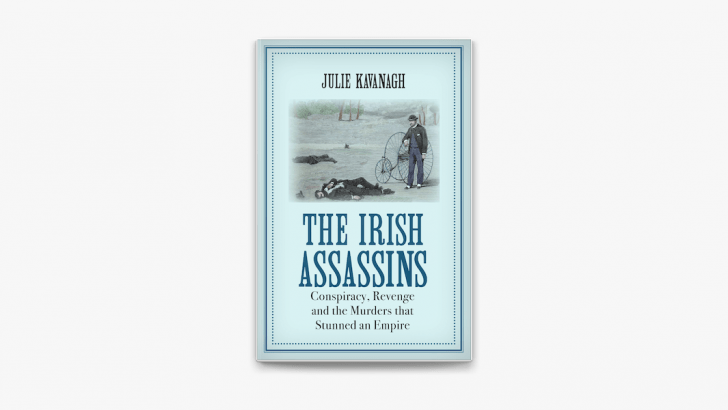The Irish Assassins: Conspiracy, Revenge and the Murders that Stunned an Empire
by Julie Kavanagh (Grove Press, £18.99)
The Queen v. Patrick O’Donnell: The Man who Shot the Informer James Carey
by Seán Ó Cuirreáin (Four Courts Press, €17.95)
Felix M. Larkin
When Lord Frederick Cavendish was killed by the Invincibles in the Phoenix Park in May 1882, nothing like it had happened in British political life since Spencer Percival was shot dead in the lobby of the House of Commons in 1812. Mr Percival is the only British prime minister to have been assassinated, and his killing was the result of a personal grievance. In contrast, Mr Cavendish’s assassination was politically motivated.
The Irish National Invincibles was an extremist Fenian society – a tiny splinter group of the Irish Republican Brotherhood, which may also have had links with the Land League through the league’s treasurer, Patrick Egan.
Mr Cavendish had just arrived in Dublin as the newly-appointed Chief Secretary for Ireland. Having met with officials in Dublin Castle immediately after his arrival, he decided to walk to the chief secretary’s lodge in the Phoenix Park, now the residence of the American ambassador. As he was walking along Chesterfield Avenue, a cab pulled up behind him and the under-secretary, Thomas Burke – the most senior Irish civil servant – got out and joined him. They walked amiably onwards, but were then set upon by the Invincibles just opposite the viceregal lodge and both were killed.
Victim
Mr Burke, not Mr Cavendish, was the Invincibles’ intended victim. On May 5, the day before the murders, they had waited for Mr Burke in the Phoenix Park, but missed him. They returned the following day to carry out their grim task. Unfortunately for Mr Cavendish, he happened to be in Mr Burke’s company and died simply because he was in the wrong place at the wrong time. It is unlikely that the Invincibles even knew who the man was who was with Mr Burke. They killed him because he tried to defend his colleague.
The killings were particularly gruesome: the assassins used long surgical knives. This ghoulish aspect appealed to the popular press, which was then coming to the fore.
There was outrage amongst the British public. The horror engendered in the political elite in Britain was shared by Charles Stewart Parnell and the other Irish leaders who recognised that it would do incalculable damage to their cause at a time when the prime minister, W.E. Gladstone, and the Liberal government were embarking on a policy of conciliation – symbolised by the so-called ‘Kilmainham Treaty’ negotiated between Mr Gladstone and Mr Parnell. Mr Cavendish was a protégé of Mr Gladstone’s – in fact, his nephew by marriage – and known to be in favour of conciliation.
Noteworthy
It is noteworthy that the perpetrators of the crime have never been admitted to the pantheon of Irish nationalist heroes. They continue, however, to attract much interest, as these two new books demonstrate. The first, by Julie Kavanagh, a former London editor of Vanity Fair and The New Yorker, is written in the lively journalistic style one associates with these journals, but it is thoroughly researched and unlikely to be bettered as an account of the incident, its antecedents and its aftermath.
The second, by Seán Ó Cuirreáin, the former Coimisinéir Teanga, focuses on Patrick O’Donnell who shot James Carey on a boat to South Africa. Mr Carey was a leader of the Invincibles who turned informer in order to save himself. His testimony sent five of the assassins to their death. He was being relocated to South Africa for his own safety when Mr O’Donnell, travelling on the same ship, discovered who he was.
Mr O’Donnell too was hanged, having been found guilty in a London court of killing Mr Carey. His guilt was not in doubt, but the conduct of his trial was unsatisfactory – as both Ms Kavanagh and Mr Ó Cuirreáin argue. He was hailed in some quarters as a hero for having dispatched Mr Carey, a figure universally reviled for having informed on the foot soldiers he had led on that fateful day in the Phoenix Park. A memorial to Mr O’Donnell was erected in Glasnevin Cemetery in 1887.
There has been a campaign in recent years to ‘rehabilitate’ the Invincibles – even to exhume the bodies of the five who were executed from Kilmainham Jail and give them honourable reburial – but these books remind us that theirs was a heinous crime which was extremely damaging to Irish nationalist interests at a critical time.



